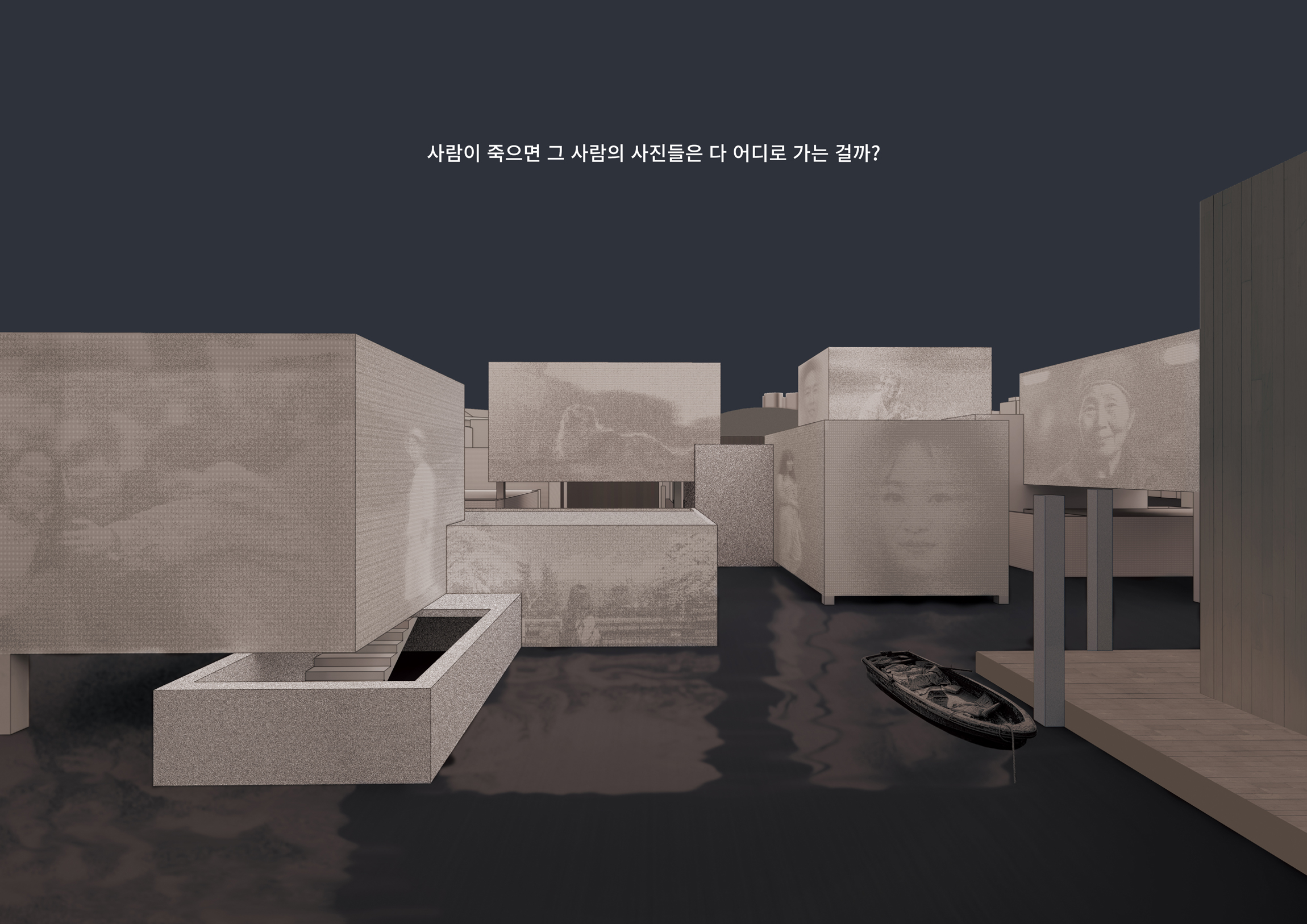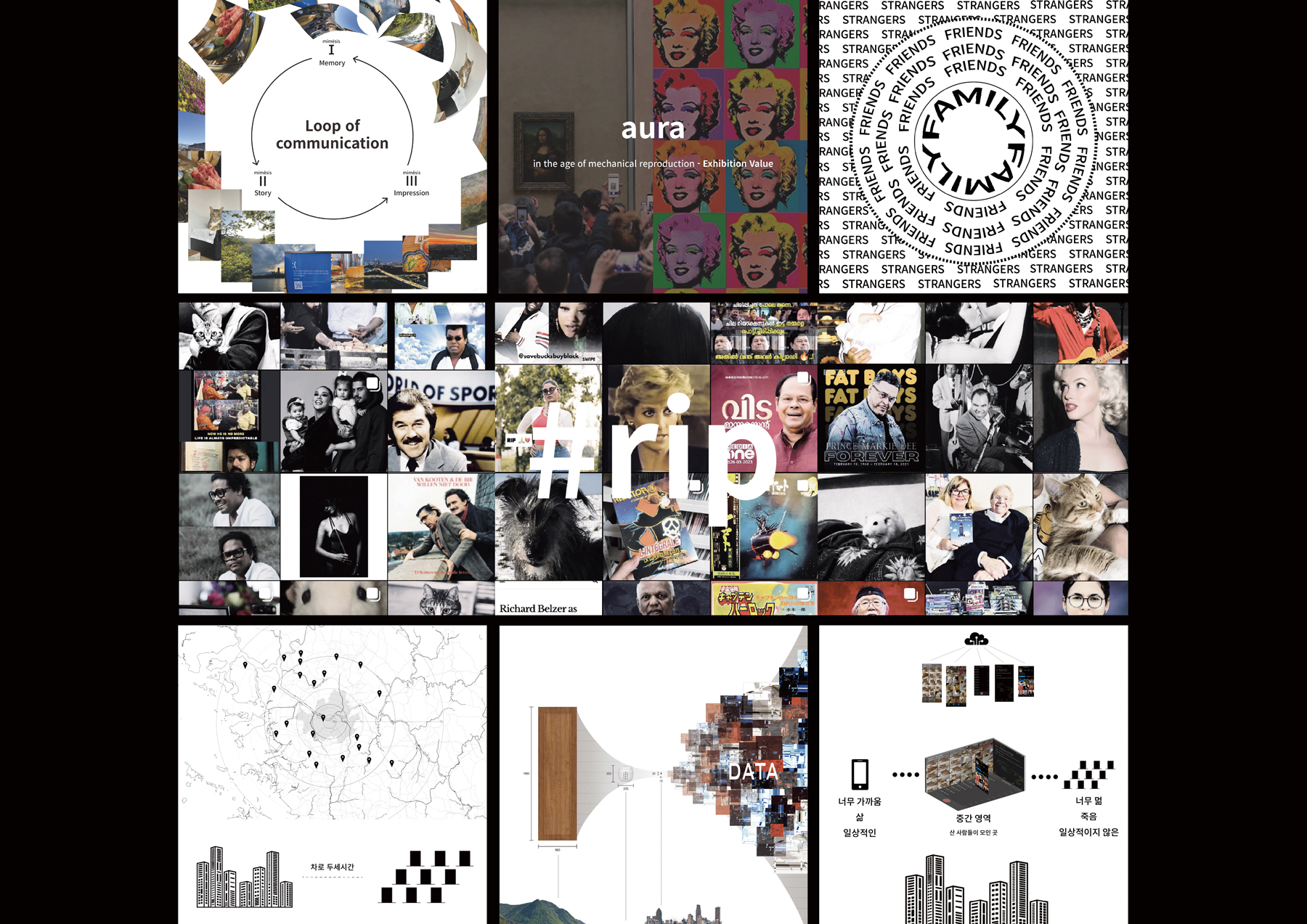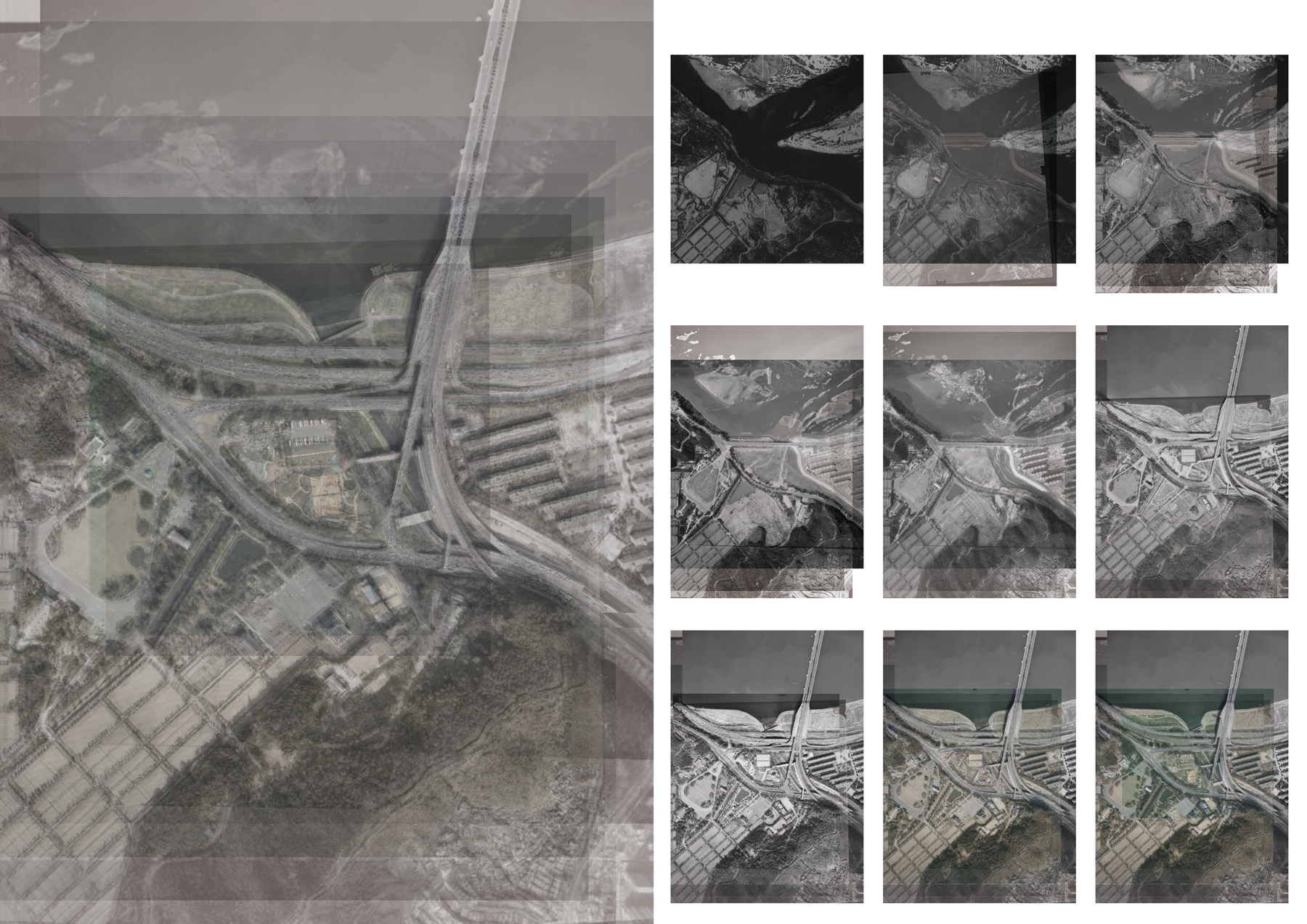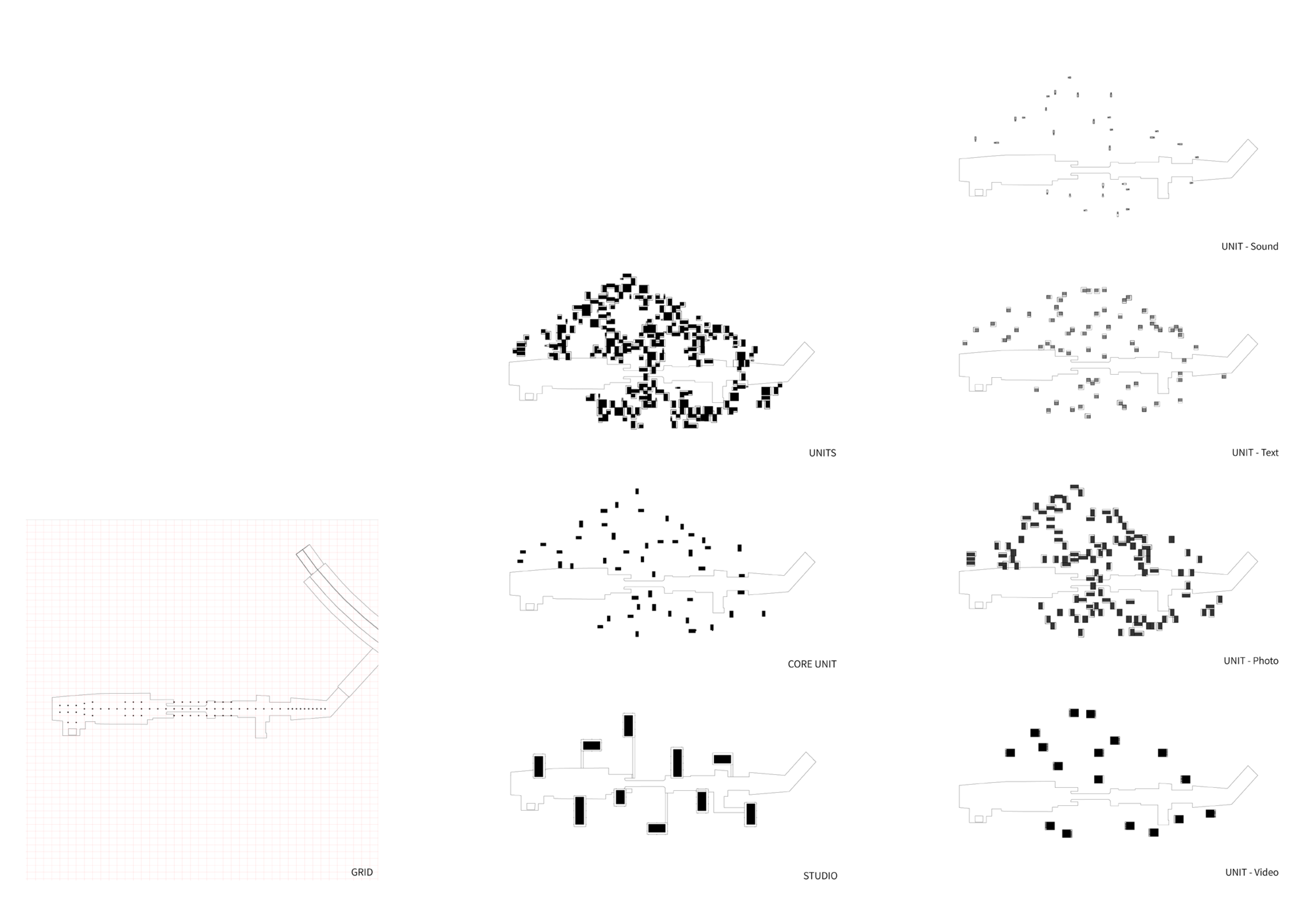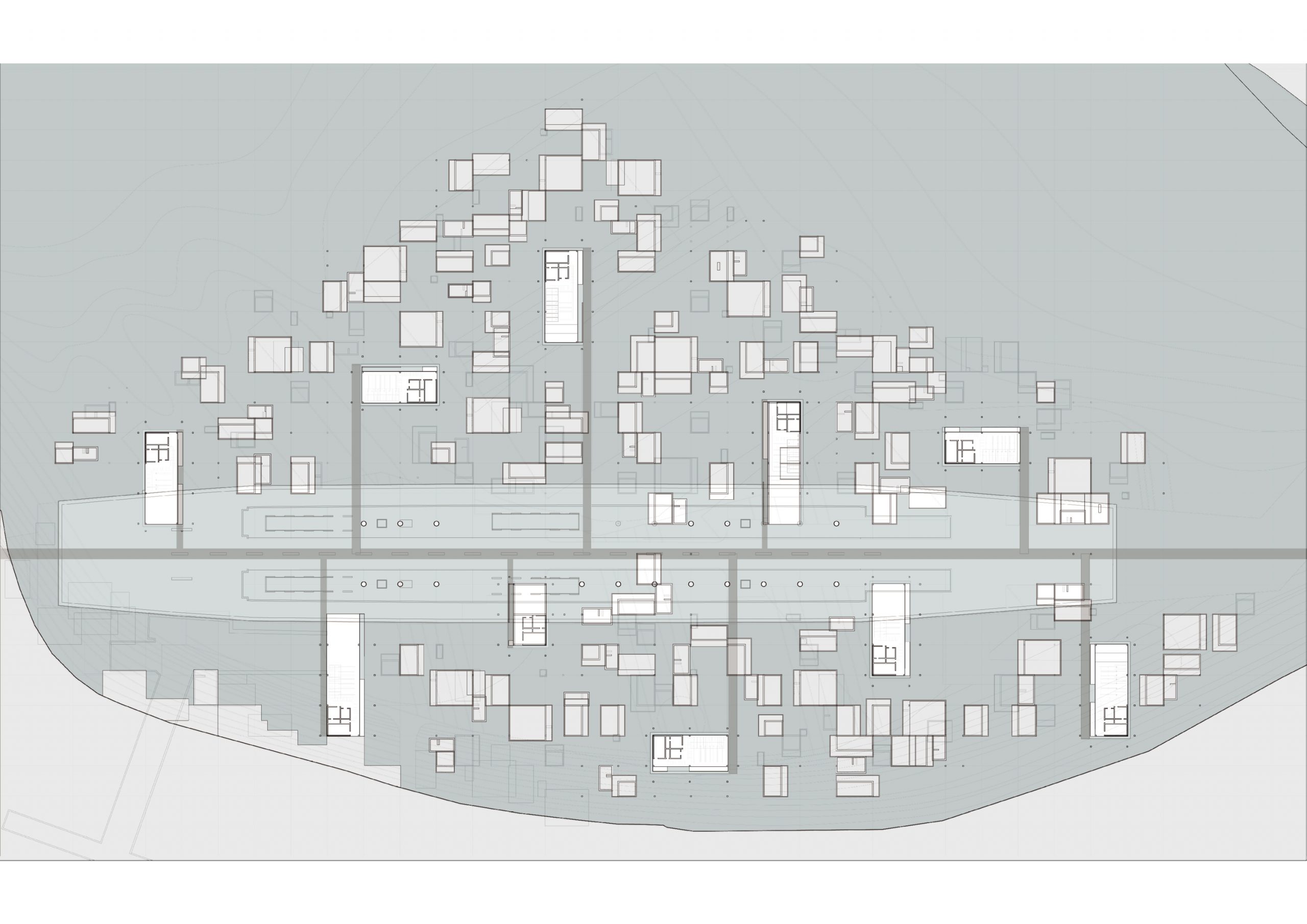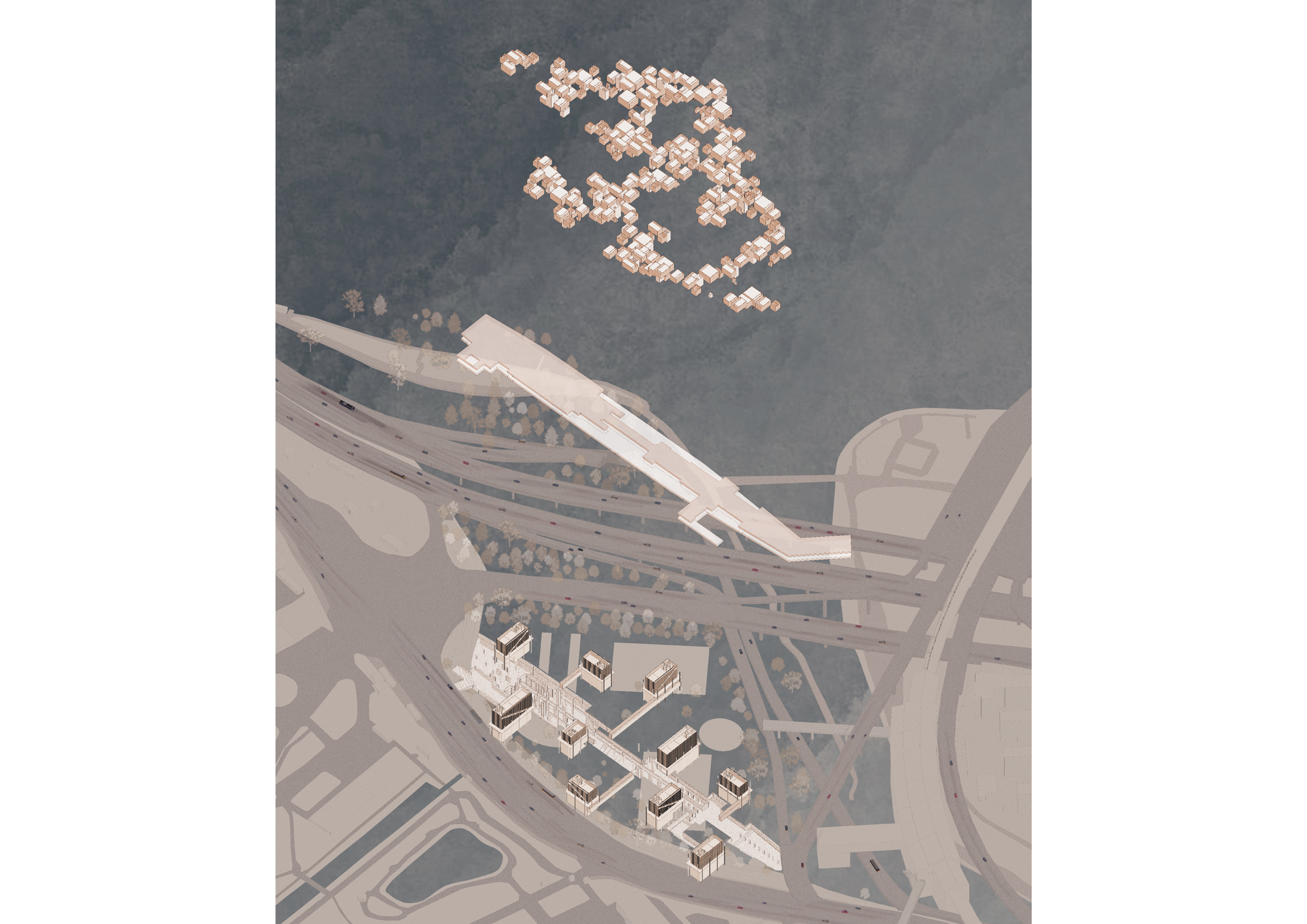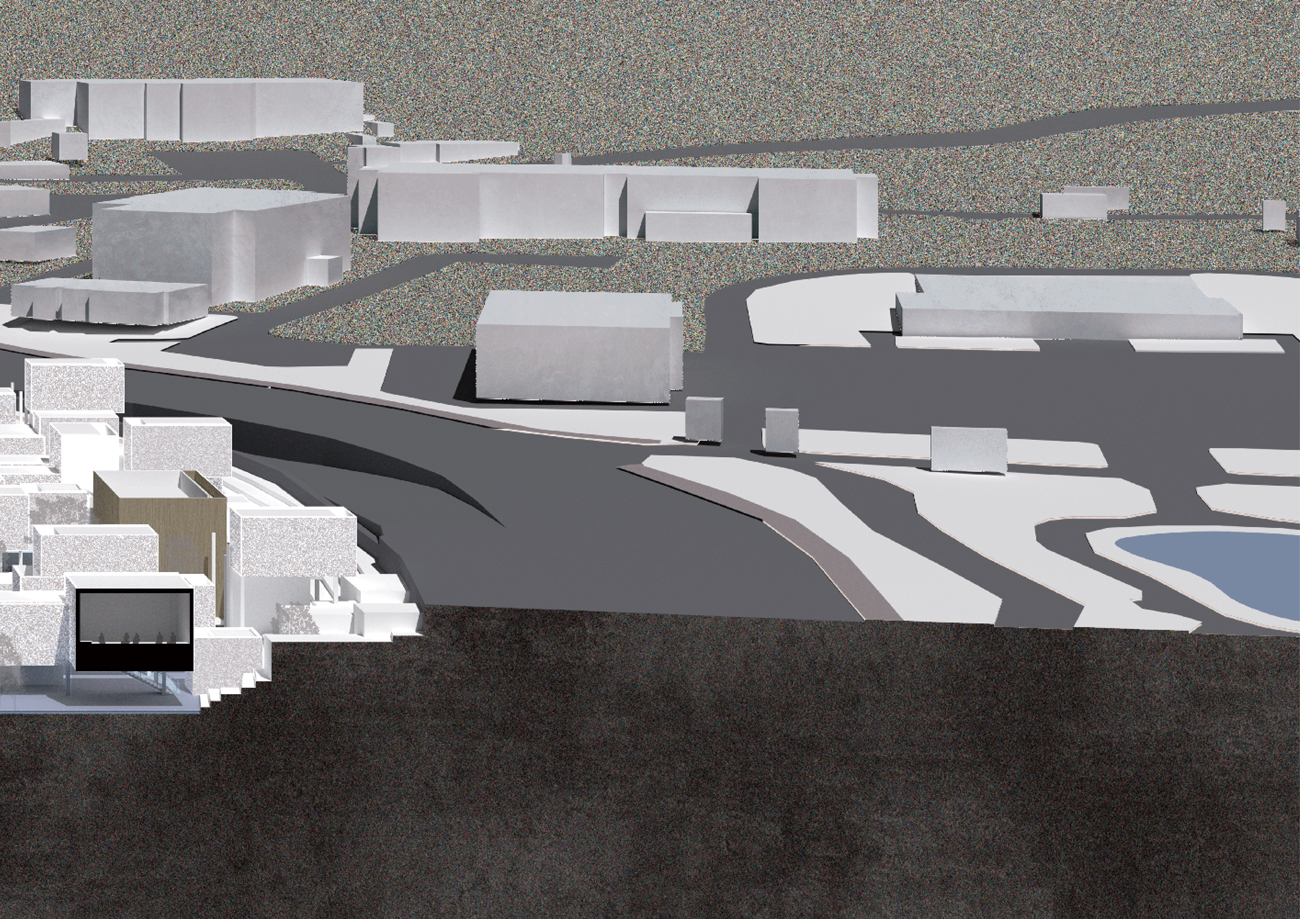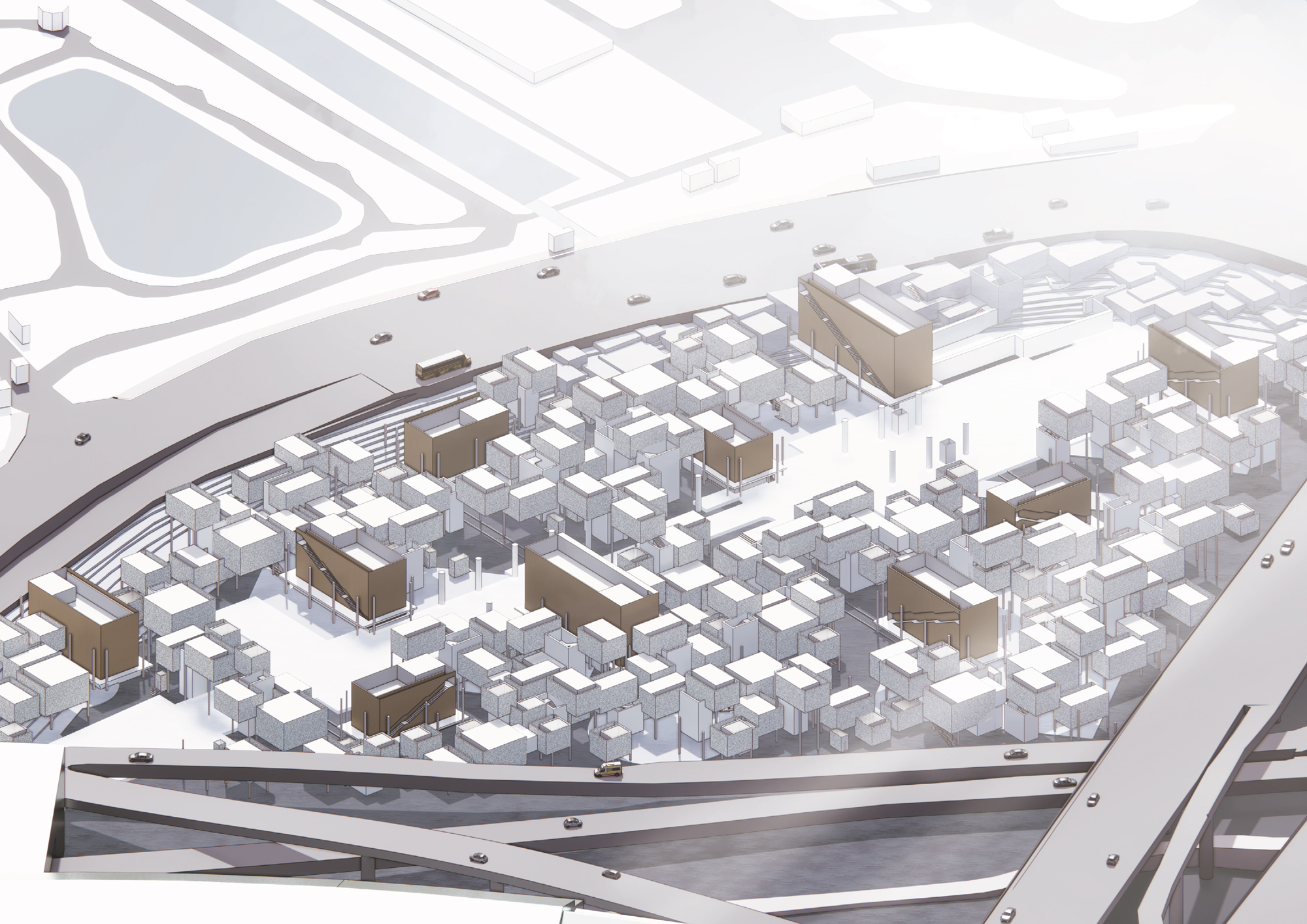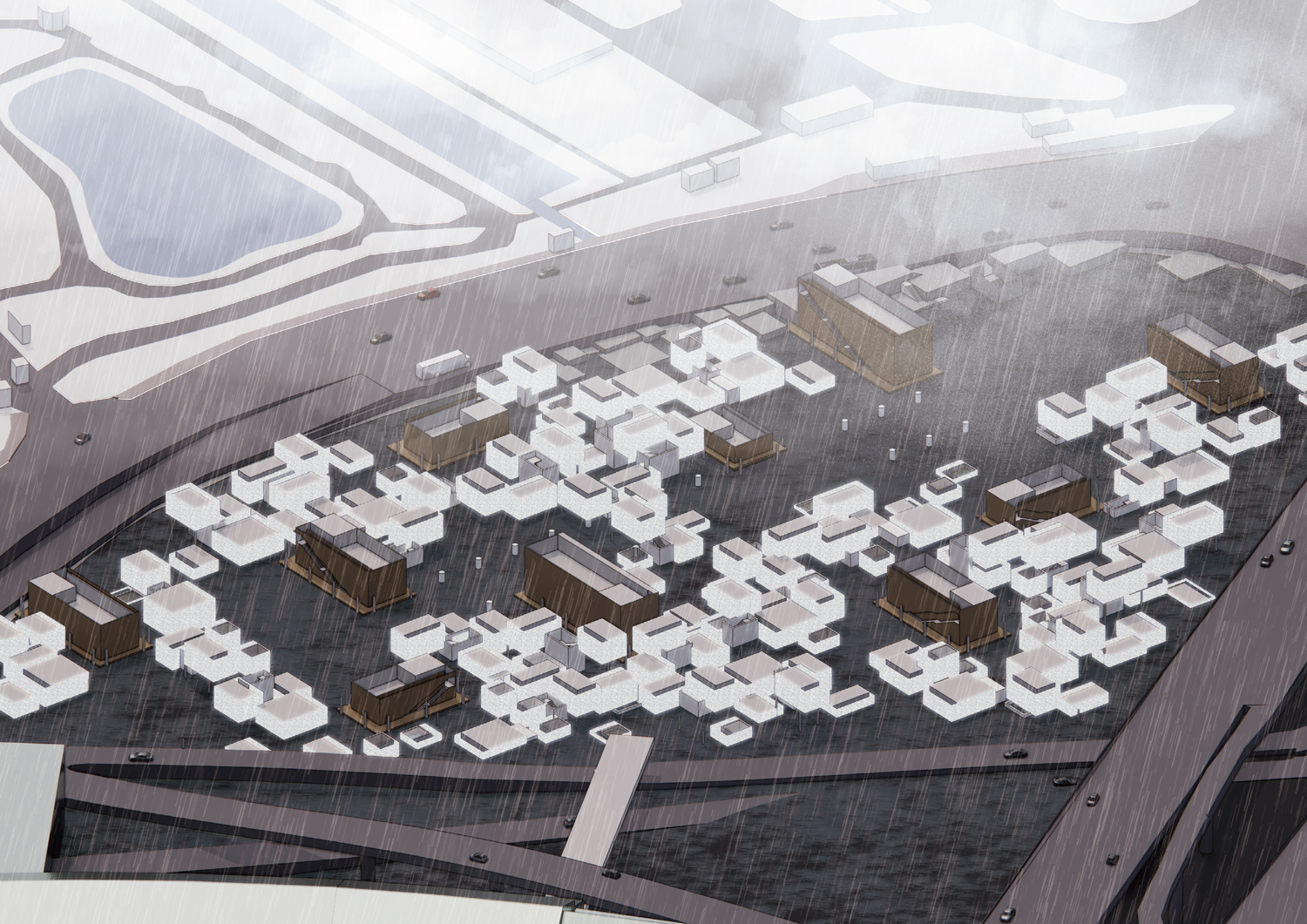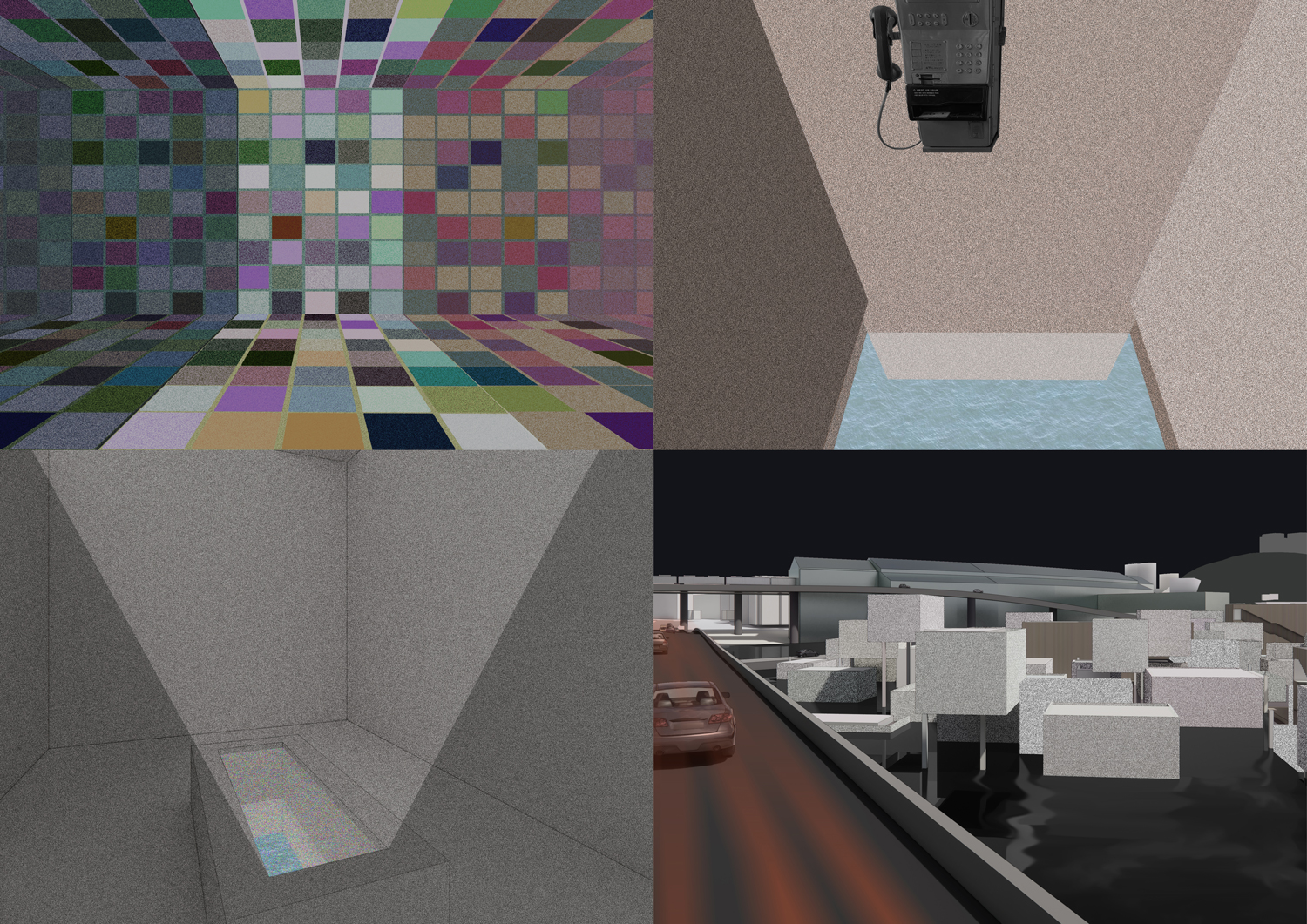박경민
Kyungmin Park
사람이 죽으면 그 사람의 사진들은 다 어디로 가는 걸까? 이전에는 이런 질문에 답할 필요가 없었지만, 점점 더 많은 사람들이 스마트폰을 쓰고, 노트북과 컴퓨터를 사용하게 되면서 축적되고 있는 ‘고인’에 대한 데이터들을 처리하는 방식에 관한 논의가 필요해지고 있다. 이러한 필요성이 건축에서는 어떻게 해석되어야 하는지에 대한 하나의 방식을 제시해보고자 했다. 이전에는 사람들을 땅속에 묻는 매장의 방식이 주류를 이루었다. 하지만 시간이 흐르면서 비용적인 측면과 여러 사회 문화적인 이유들로 90퍼센트에 달하는 대다수의 사람들이 매장 대신 화장의 방식을 선택하고 있으며 이에 따라 죽은 자들을 위한 공간이 점차 compact해지고 있는 추세이다. 재미있는 점은 이렇게 공간이 간소화될수록, 기존의 묘지와 기능적, 형태적으로 멀어질수록 죽은 사람들을 위한 공간이 도심 쪽으로 점점 가까워질 수 있다는 점이다. 묘지에서 납골함으로, 더 나아가 usb나 데이터의 형태로 작아지고 추상화될수록 도심에 점점 가까워지다가 이들을 위한 시설이 서울 한복판에 위치하게 된다면, 이런 시설이 들어올 만한 자리로 서울 현충원 앞 주차공원을 생각해 보았다. 서울 현충원은 수도의 한복판에 위치한 국내 최고 권위의 묘지이다. 이곳에는 전 대통령들을 비롯한, 국가로부터 공을 인정받은 극소수만이 이용할 수 있다. 만약 데이터를 이용한 추모공원이 만들어진다면, 현충원의 1/24배 규모인 이곳에 몇 배 이상의 죽은 사람들을 위한 공간을 꾸릴 수 있을 것이라 생각했다. 디지털 데이터들을 이용한 추모 공원은 어떤 모습으로 어떠한 기능들을 수행해야 할까? 디지털 시대 이전의 추모 방식과 기억의 매커니즘이 새로운 매체를 만나면서 일어난 변화들과, 그 변화 속에서도 변하지 않을 본질은 무엇일까?
기억들은 오늘날 사진과 동영상 등의 형태로 데이터의 세상 속을 표류한다. 이들이 사람들에게 보여지고 사용되기 전, 각각의 데이터 사이에는 아무런 질서가 없다. 데이터의 바다 속에서 각각의 디지털 자료들을 꺼내어 사람들에게 보여질 수 있는 형태로(share-able) 질서와 체계를 부여하고 이야기를 만들어내는 ‘창작의 공간’ - 스튜디오와, 이들 이야기가 사람들에게 들려지고 전달되는 ‘전시와 해석의 공간’ – 갤러리 유닛, 다시 이들 자료가 사람들의 새로운 감상과 기억, 새로운 디지털 자료들로 남아 다시 무질서한 데이터의 공간으로 되돌아가기까지의 순환이 일어나는 공간을 상상한다. 이러한 현실 세계에서 일어나는 순환 속에서도 데이터들은 끊임없이 투영과 환기의 도구로 사용되면서 현실 공간과, 그리고 현실 공간의 사람들과 관계를 맺는다.
각각의 유닛들은 데이터들이 전시되는 동안은 잠시나마 그 사람만의 것이 된다. 사진들은 갤러리 유닛들의 내부에도 전시되지만, 유닛들 외부에서도 입면 재료를 통해 비춰지면서 아무런 연관이 없는, 이 공간을 스쳐 지나가는 사람들까지도 이 죽은 사람들이 시간 속에 초대된다.
스튜디오는 갤러리 유닛들보다는 일상적인 공간으로 사람들이 언제든 본인이 기억하고 싶은 자료들을 가져와 디지털화 할 수 있는 공간이다. 이곳에서 생산되고 저장된 자료들은 생후 갤러리 유닛에서 전시된다. 한편 갤러리 유닛들은 스튜디오 혹은 9호선 역사와 물리적으로 연결되어 있지 않아, 비가 많이 와서 이곳이 침수되는 날이면 스튜디오에 있는 부둣가에서 배를 타고 가야만 접근할 수 있다. 이 작품에서 ‘물’ 이라는 요소는 그만큼 이곳의 죽음과 대자연 앞에서 저항할 수 없는 인간의 무력함을 강조하면서도, 건물의 외피에서 빛나고 있는 사람들의 얼굴을 한 번 더 비춰주고 있다.
When a person dies, where do all the photos and videos stored on the person’s cell phone go? Previously, there was no need to answer these questions, but as more and more people use smartphones and use laptops and computers, discussions are needed on how to handle accumulating data about the “deceased.” I tried to present a way of how this necessity should be interpreted in architecture. In the past, burying people in the ground was the mainstream of the method of burial. Over time, however, the majority of people, 90 percent, choose cremation instead of burial for cost and various socio-cultural reasons, and the space for the dead is becoming increasingly compact. What’s interesting is that the more simplified the space, the more functionally and morphologically away from the existing cemetery, the closer the space for the dead can be toward the city center. If the cemetery becomes smaller and abstracted in the form of USB or data, and the facility for them becomes located in the middle of Seoul, I thought of a parking lot in front of the Seoul Cemetery as a place to enter. Seoul Cemetery is the nation’s most prestigious cemetery located in the middle of the capital. It is only available to a small number of former presidents and others who have been recognized by the state. If a memorial park using data is built in front of the National Cemetery, I thought that this place, which is 1/24 times the size of the National Cemetery, could have space for the dead several times more. How should a memorial park using digital data look and what functions should it perform? What are the changes that took place as the pre-digital memory mechanisms met new media, and what is the essence that will not change even in the midst of those changes?
Memories drift in the world of data in the form of photos and videos today. Before they are seen and used by people, there is no order between each piece of data. Imagine a memorial park, where circulation of memory in the digital era takes place. ‘Studio’ which takes out each digital material from the sea of data, gives order and system in a share-able form and creates a story. ‘Exhibition hall’ is a place where these stories are heard and transmitted to people, and the cycle is finally completed when people visiting this place, leaving them with new memories and new digital materials.

